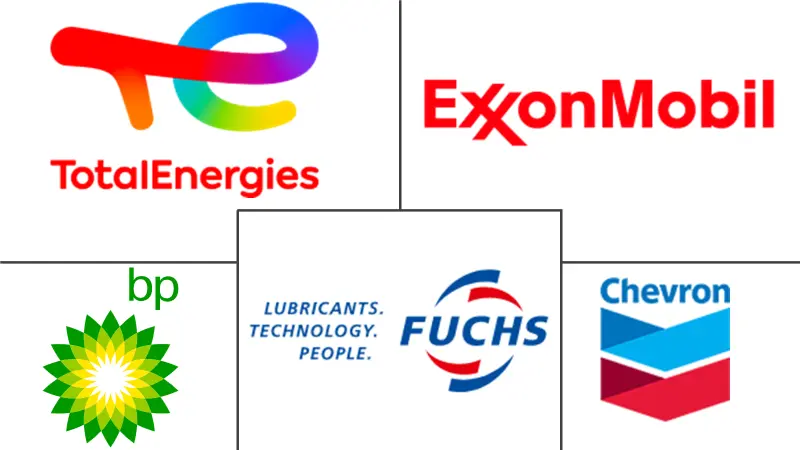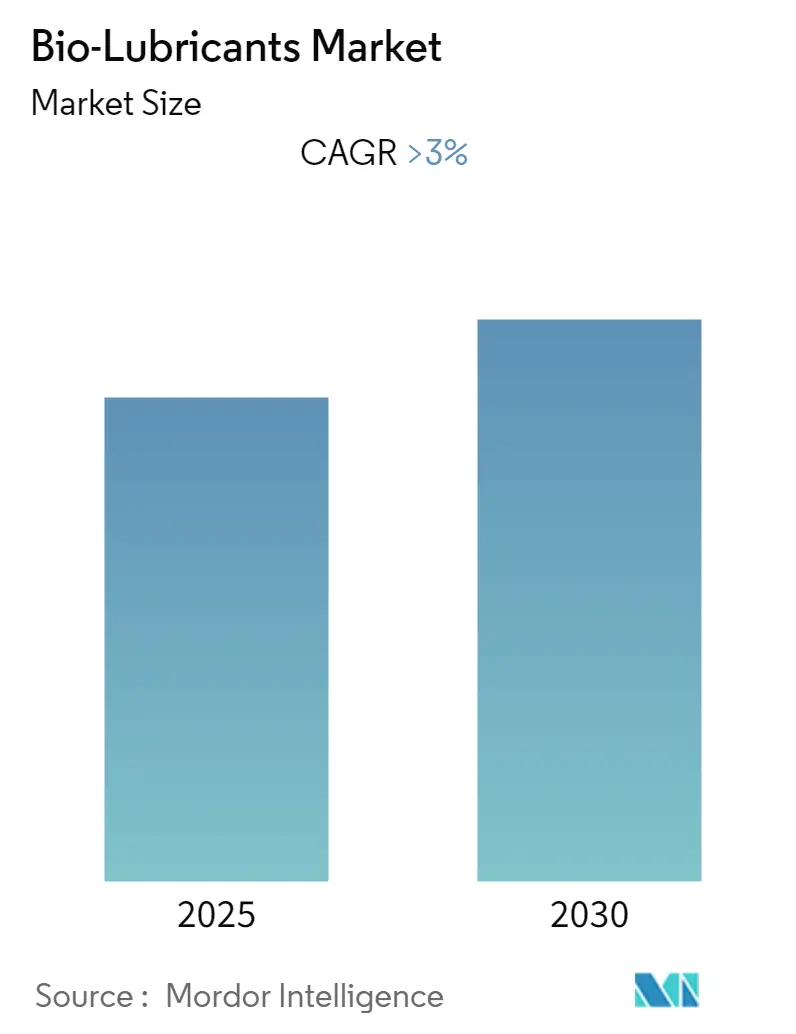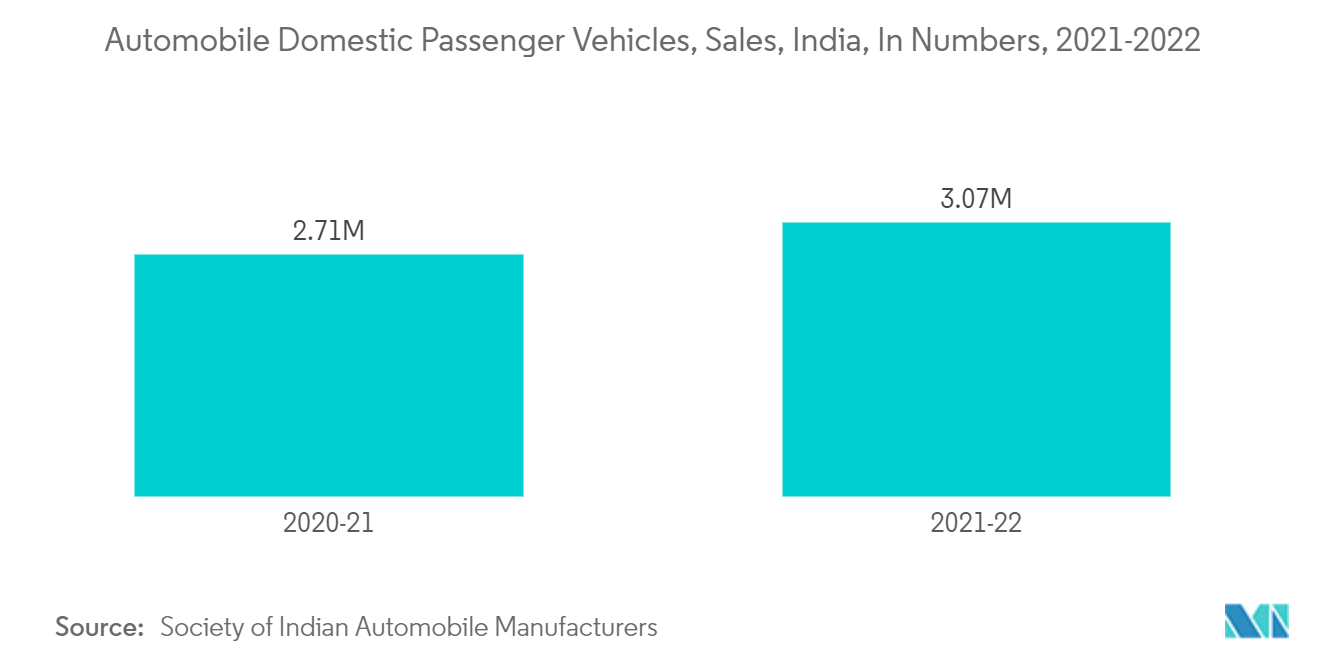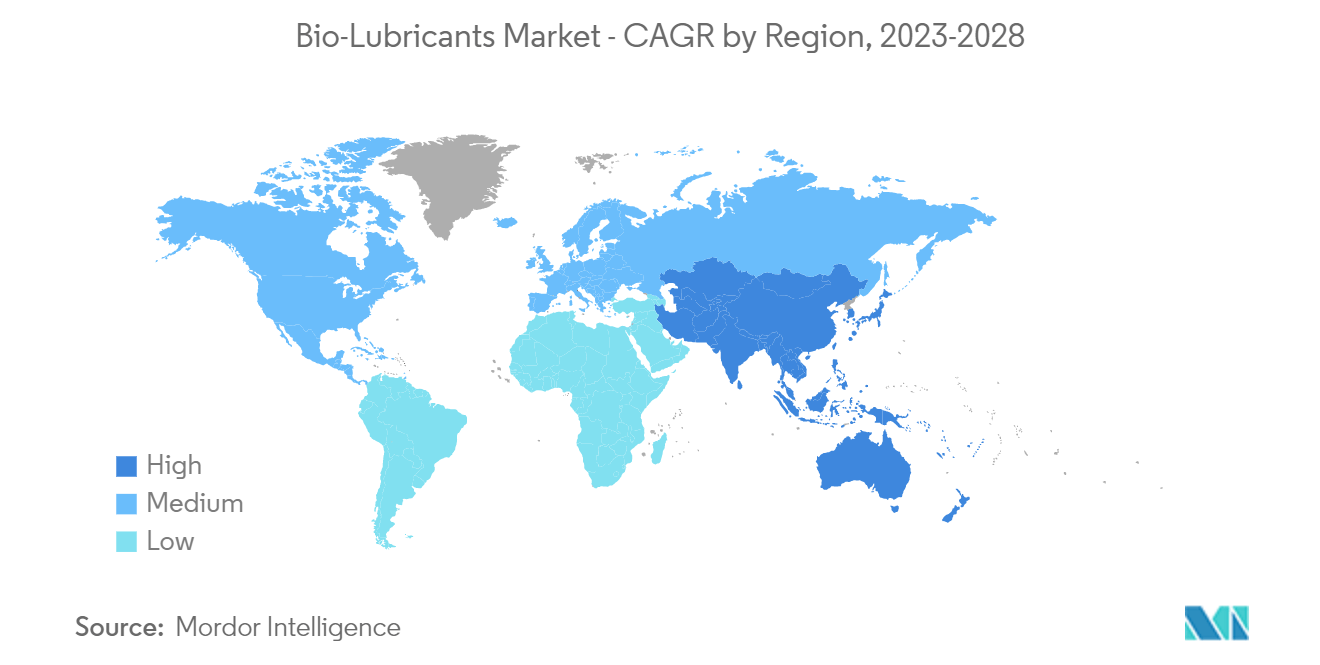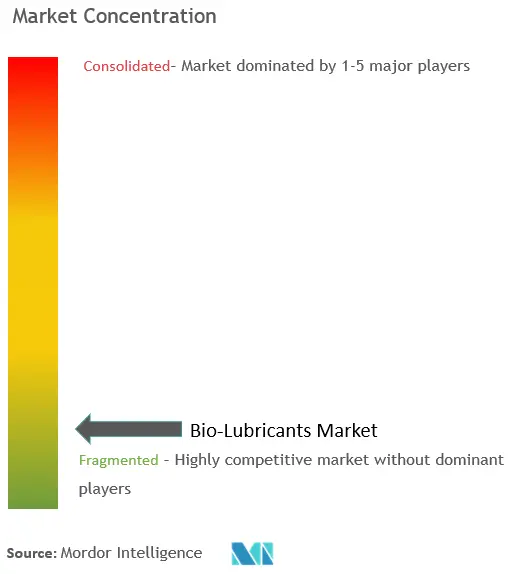Bio-Lubricants Market Analysis
The Bio-Lubricants Market is expected to register a CAGR of greater than 3% during the forecast period.
- COVID-19 negatively impacted the market in 2020. However, the market reached pre-pandemic levels in 2022 and is expected to grow steadily in the future.
- Bio-based lubricants do not cause skin inflammation, which is generally caused by petroleum-based lubricants. Additionally, they have various advantages, such as reduced energy usage, labor costs, increased employee safety, improved environmental conditions, increased machine life, and increased production, thereby augmenting the market's growth.
- Bio-lubricants are produced by esterifying a fatty acid or trans-esterifying vegetable oil. This process is being held with long-chain alcohol in the presence of a homogeneous acid/base catalyst 8 -10 or using an ion-exchange resin. This process increases the cost of bio-based lubricants. This is likely to hinder the market's growth.
- Various R&D projects have been completed to improve the physicochemical properties of bio-based lubricants. These studies have found that bio-lubricants can be used as substitutes for petroleum-based oils and are projected to act as an opportunity for the market.
- The Asia-Pacific region dominated the global market, with the largest consumption from countries such as China, India, and Japan.
Bio-Lubricants Market Trends
Increase in Demand for Bio-Lubricants in Automotive and Transportation Sector
- The automotive and transportation sector accounts for a considerable share of the market for bio-lubricants. The transportation industry emphasizes enhancing lubricant properties such as performance, longevity, energy efficiency, and environmental friendliness. Bio-greases work well in various applications, including construction vehicles, forestry machinery, rail flanges, rail curves, and nautical machinery.
- Many industries use bio-based metal cutting fluids and coolants for grinding, gear cutting, and general machining, which are anticipated to drive market growth. Due to their low toxicity, high viscosity index, potent lubricating properties, longer machine service life, high combustion temperature, and other characteristics, bio-based lubricants are expected to displace conventional lubricants in the automotive industry eventually.
- The expansion of the automotive sector in China is anticipated to cultivate the demand for bio-lubricants. According to the International Organization of Motor Vehicle Manufacturers (French: Organisation Internationale des Constructeurs d'Automobiles) (OICA), China is the largest producer of automobiles. The country alone produced 2,60,82,220 units of vehicles in 2021.
- Also, India witnessed a significant increase in the sales of passenger vehicles and commercial vehicles. For instance, the domestic sales of passenger vehicles were 3,069,499 for 2021-2022, representing an increase of 13% compared to 2020-21. All the aforementioned factors are expected to drive the global market during the forecast period.
Asia-Pacific to Dominate the Market
- China is the third largest bio-lubricant consumer in the Asia-Pacific region. The expanding power generation industry in the region is anticipated to drive the bio-lubricant market during the forecast period.
- In 2021, India had a capacity for more than 147.1 gigawatts of renewable energy. This was higher than the peak for the period under consideration in 2020, which was 134.5 gigawatts, supporting the market's growth significantly.
- Around 8,377 terawatt hours of electricity were produced in China in 2021. This was an increase over the previous year of almost 10%. Except for hydropower, all energy sources were more significantly consumed in 2021, with wind and solar power generating increases being majorly used.
- Moreover, the Japanese government has also been planning to build 45 new coal-fired power plants in the country by using high-energy, low-emission technology, which uses high-quality black coal. With the increasing number of power plants in the country, accelerated demand for bio-lubricants for use in power plants is expected during the forecast period.
- Therefore, this increase in the power industry is expected to drive the bio-lubricants market in the Asia-Pacific region.
Bio-Lubricants Industry Overview
The bio-lubricants market is fragmented in nature. Some of the major players in the market include BP p.l.c., Chevron Corporation., Exxon Mobil Corporation, TotalEnergies, and FUCHS, among others
Bio-Lubricants Market Leaders
-
Chevron Corporation
-
TotalEnergies
-
Exxon Mobil Corporation
-
BP p.l.c.
-
FUCHS
- *Disclaimer: Major Players sorted in no particular order
Bio-Lubricants Market News
- November 2022: Wholly-owned subsidiaries of Shell plc in Switzerland, the United Kingdom, the United States, and Sweden entered into agreements to acquire the environmentally considerate lubricants (ECLs) business of the Panolin Group. This transaction brings with it an offering of biodegradable lubricants.
- February 2022: BP acquired a 30% stake in Green Biofuels Ltd and will collaborate to help decarbonize enterprises in the construction, freight, off-road, and maritime sectors. Renewable hydrogenated vegetable oil (HVO) fuels from green biofuels can be utilized as a direct replacement for diesel.
Bio-Lubricants Industry Segmentation
Bio-lubricants are functional fluids derived from vegetable oils and esters. Bio-lubricants can help reduce stormwater pollution caused by brake, hydraulic, and engine leaks. They are used in heavy machinery like railroad flanges, chainsaw bars, and two-stroke engines to reduce friction between surfaces because of their eco-friendly and biodegradable properties. Unlike bio-based lubricants, petroleum-based lubricants frequently result in skin irritation.
The bio-lubricants market is segmented by product type, end-user, and geography. By product type, the market is segmented into engine oil, transmission and hydraulic fluid, metalworking fluid, general industrial oil, gear oil, grease, and process oil. By end-user, the market is segmented into power generation, automotive and other transportation, heavy equipment, food and beverage, metallurgy and metalworking, chemical manufacturing, and other end-user industries. The report also covers the market size and forecasts in 15 countries across major regions.
For each segment, the market sizing and forecasts have been done based on revenue (USD million).
| Product Type | Engine Oil | ||
| Transmission and Hydraulic Fluid | |||
| Metalworking Fluid | |||
| General Industrial Oil | |||
| Gear Oil | |||
| Grease | |||
| Process Oil | |||
| Other Product Types | |||
| End-user Industry | Power Generation | ||
| Automotive and Other Transportation | |||
| Heavy Equipment | |||
| Food & Beverage | |||
| Metallurgy & Metalworking | |||
| Chemical Manufacturing | |||
| Other End-user Industries | |||
| Geography | Asia-Pacific | China | |
| India | |||
| Japan | |||
| South Korea | |||
| Rest of Asia-Pacific | |||
| North America | United States | ||
| Canada | |||
| Mexico | |||
| Rest of North America | |||
| Europe | Germany | ||
| United Kingdom | |||
| Italy | |||
| France | |||
| Russia | |||
| Rest of Europe | |||
| South America | Brazil | ||
| Argentina | |||
| Rest of South America | |||
| Middle East & Africa | Saudi Arabia | ||
| South Africa | |||
| United Arab Emirates | |||
| Rest of Middle East & Africa | |||
Bio-Lubricants Market Research FAQs
What is the current Bio-Lubricants Market size?
The Bio-Lubricants Market is projected to register a CAGR of greater than 3% during the forecast period (2025-2030)
Who are the key players in Bio-Lubricants Market?
Chevron Corporation, TotalEnergies, Exxon Mobil Corporation, BP p.l.c. and FUCHS are the major companies operating in the Bio-Lubricants Market.
Which is the fastest growing region in Bio-Lubricants Market?
Asia Pacific is estimated to grow at the highest CAGR over the forecast period (2025-2030).
Which region has the biggest share in Bio-Lubricants Market?
In 2025, the Asia Pacific accounts for the largest market share in Bio-Lubricants Market.
What years does this Bio-Lubricants Market cover?
The report covers the Bio-Lubricants Market historical market size for years: 2019, 2020, 2021, 2022, 2023 and 2024. The report also forecasts the Bio-Lubricants Market size for years: 2025, 2026, 2027, 2028, 2029 and 2030.
Our Best Selling Reports
Biolubricants Industry Report
Statistics for the 2025 Bio-Lubricants market share, size and revenue growth rate, created by Mordor Intelligence™ Industry Reports. Bio-Lubricants analysis includes a market forecast outlook for 2025 to 2030 and historical overview. Get a sample of this industry analysis as a free report PDF download.

